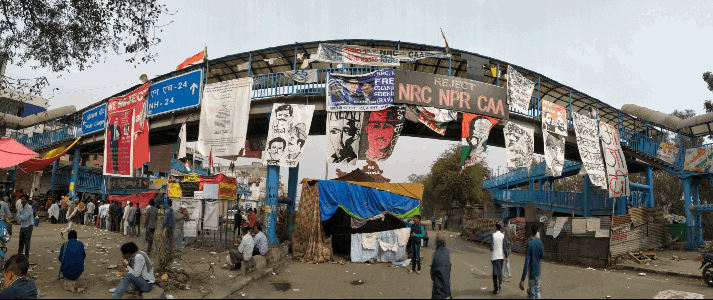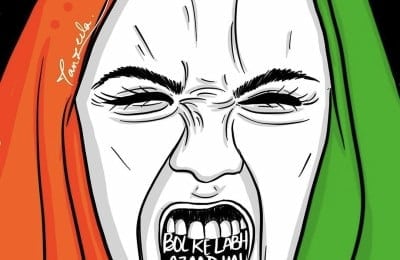Does your bemused self stand at crossroads, indecisive of whether to join in on vocalising dissent amidst the palpable protest culture or not? Read on to find about the battle that ensues.
You might have been a busy bee drenched with assignments, deadlines, society commitments, parties, tinder dates, self quarantines (if you are introvert) and other youth culture activities, but simultaneously there has been a turbulence which led to class suspensions, teachers’ strike, mass harassment, violent riots and police crackdowns which in turn made ‘Inquilab’ strike a crescendo.
What one may find sudden and superious is aftermath of staying passive and not challenging the existent discourse.
“Without deviation from the norm progress is not possible.” The underlying construct of this quote by Frank Zappa is evident in every little rebellious thing we do. To say someone has never protested about anything in life seems far from veracity. There are no shortages of elements which challenge the social, political, economical and cultural cloak which blankets our existence of being. We don’t dwell in Utopia. This leaves us with the current state of affairs which are results of unchallenged perpetuated norms of behavior.
But is it right to put the onus on small fragile shoulders of people who are unfazed with oppressions, are cocooned in comfort, enmeshed in apolitical stances and have sorted priorities?
These are some of the many reasons also labelled as excuses by active participants of protests. Arunima Tripathi, a B.A. (H) Political Science, first year student from Kirori Mal College expressed her dismay over privilege shaming and said,”Keeping my privileges and political leanings aside, I join in on protests because it comes from my conscience and common sense.”
There are some who wish to be vociferous but silence themselves from the fear of their parents and society. Some fear safety amidst police crackdowns. Priyanshi Sarraf, a first year B.Com. (H) student from Hansraj College said,”I feel guilty about not being able to mobilise for protests because of restrictions from my parents who fear for my safety, but I try to be active on social media and voice my opinions where I feel relatively safer. I do receive flak sometimes but it’s my space after all.”
Online activism emboldens the cause without any doubts. Protesting is not just mere taking to streets but also cultivating a sphere which encourages more voices to follow. Those active ones continuously try to get the attention of maximum people possible to join in on the mission. This helps in keeping the discourse on the table for discussions and engagement rather than losing it in the winds of oblivion.
Political correctness is ideal when going in protests. There are instances where people are not aware of the anatomy of the protests. Brut India’s short video surfaced which showed a woman alleging her husband and kids who forced her to sit in Shah Jamal demonstrations in Aligarh in the wake of protest tide against Citizenship Amendment Act. Such accounts of incidents weakens the stride of the movement. Pro or Anti, if you feel like you have something to say remember it’s your right to do so and if you sit in silence nothing is going to change the frosted dynamic.
To protest or not to protest is a matter for your indecisive conscience but it also is an obligation to the ones to who have the potential to act in times when crisis befalls. As Martin Luther King Jr said, “There comes a time when silence is betrayal,” you have to be wary of which side you pick because that winter of the times sure has come!
Feature image credits: DU Beat
Umaima Khanam











